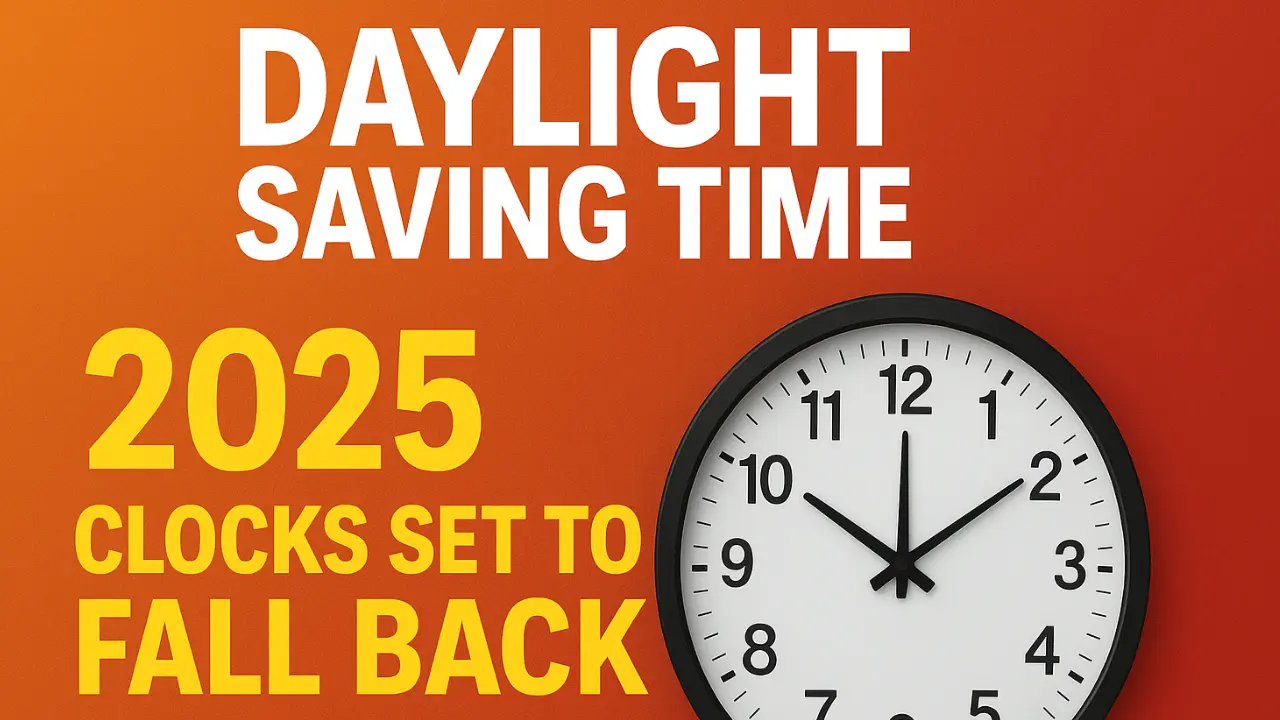Daylight Saving Time (DST) is a practice that most Americans are familiar with: adjusting clocks forward in spring and backward in fall to make better use of daylight hours. The upcoming fall season in 2025 will once again bring the annual clock change, but this year, clocks will fall back sooner than in some past years. This article dives into what this change means, the states that observe DST, and the broader implications for individuals and society.
What is Daylight Saving Time?
Daylight Saving Time is the seasonal shifting of the clock forward by one hour in spring (“spring forward”) and backward by one hour in fall (“fall back”). This system aims to extend evening daylight during warmer months, thereby reducing the need for artificial light and attempting to conserve energy. By setting clocks ahead in spring, evenings enjoy more sunlight, and by setting clocks back in fall, mornings gain more daylight during the darker months.
History and Purpose of DST
The concept of DST dates back over a century and was first adopted in the United States during World War I to conserve fuel by reducing artificial lighting needs. Since then, the specific dates and duration for observing DST have changed multiple times. The current schedule in the U.S., which was set by the Energy Policy Act of 2005, begins DST on the second Sunday in March and ends it on the first Sunday in November.
Daylight Saving Time in 2025: Important Dates and Changes
In 2025, DST will start on Sunday, March 9, when clocks were set forward by one hour at 2:00 a.m., moving to 3:00 a.m. This spring forward extended evening daylight hours for about eight months. The fall back change, when clocks are set one hour back, is scheduled for Sunday, November 2, 2025, at 2:00 a.m., falling back to 1:00 a.m.
This year’s fall change occurs on the first Sunday of November, consistent with the current DST schedule. However, the phrase “fall back sooner” refers to this timing earlier in November compared to past earlier DST end dates in October in some previous years under old rules or in other countries. The result is that Daylight Saving Time ends sooner relative to recent multi-year trends in places that had extended DST periods.
The Specifics of Clocks Falling Back in 2025
On November 2, 2025, at 2:00 a.m. local daylight time, clocks will be set backward one hour to 1:00 a.m. local standard time. This marks the return to standard time from DST, leading to shorter evening daylight hours and earlier sunsets. However, mornings will have more light, which can be beneficial for certain daily activities like commuting and school starting times. This also means that people get an extra hour of sleep on the night of the change.
States and Regions Observing DST in 2025
Most of the United States observes DST, but there are exceptions. The states of Hawaii and most of Arizona do not follow DST. Additionally, various U.S. territories like Puerto Rico, Guam, American Samoa, and the Virgin Islands do not observe the time change. The rest of the states, including major population centers like California, Texas, Florida, New York, and Illinois, will turn clocks back on November 2, 2025.
The table below shows states and their DST status for 2025:
| State/Territory | DST Observed in 2025? |
|---|---|
| Alabama | Yes |
| Alaska | Yes |
| Arizona | No |
| California | Yes |
| Florida | Yes |
| Hawaii | No |
| New York | Yes |
| Texas | Yes |
| Puerto Rico | No |
| Virgin Islands | No |
The Debate Over DST: Pros and Cons
Daylight Saving Time has long been controversial. Advocates argue that DST saves energy by reducing the use of artificial light in the evening, boosts outdoor leisure activities, and can reduce traffic accidents by providing more evening daylight. However, critics note that the energy savings are minimal or inconsistent, and the clock changes disrupt human circadian rhythms, leading to health problems including sleep deprivation, heart issues, and increased accident risks around the transition days.
Impact of DST on Health, Economy, and Energy
Studies have shown that the sudden change in time negatively affects sleep patterns and can lead to increased heart attacks and strokes immediately after the change. Economically, DST can both positively influence retail and sports by encouraging more evening activity, though the overall impact on energy consumption is debated, with some regions observing insignificant or even negative savings.
Changes in Public Opinion and Legislative Actions
Public opinion in the United States has shifted considerably, with many supporting the idea of eliminating the twice-yearly clock changes altogether. Surveys indicate that more than half of Americans favor either permanent standard time or permanent DST to avoid the disruptive biannual shifts. In recent years, about 30 states have introduced legislation to eliminate the clock changes, though federal approval remains necessary for permanent DST adoption.
Preparation for the 2025 Time Change
As the November 2 clock change approaches, individuals are advised to prepare by gradually adjusting their sleep schedule in the days leading up to the shift. This can mitigate the negative effects on health and mood caused by abrupt changes. Other practical tips include checking and updating clocks on appliances, electronic devices, and vehicles that do not automatically switch.
Summary and Final Thoughts
Daylight Saving Time in 2025 will end on November 2, when most Americans will set their clocks back one hour, gaining an extra hour of sleep and more morning daylight. This time change marks a return to standard time as daylight shortens through fall and winter. While the DST changes aim to optimize daylight usage, ongoing debates about its health and economic impacts continue, fueling efforts to reform or abolish the practice at both state and national levels. For now, the 2025 fall back remains a vital biannual event for millions, reminding them to adjust their schedules and make the most of the shifting daylight hours.
FAQs:
When does Daylight Saving Time end in 2025?
DST ends on Sunday, November 2, 2025, at 2:00 a.m. local daylight time. Clocks are set back one hour to 1:00 a.m., returning to standard time.
Which states do not observe Daylight Saving Time?
In the U.S., Hawaii and most of Arizona do not observe DST. Some territories like Puerto Rico, Guam, and American Samoa also do not change clocks.
Is Daylight Saving Time likely to be permanent?
There is ongoing legislative discussion, with some states and lawmakers pushing for permanent DST or standard time, but federal approval is required for any permanent change.
What are the health impacts of DST?
Transitioning in and out of DST can disrupt circadian rhythms, leading to sleep loss, increased risk of heart attacks, strokes, and other health issues around the change dates.












Leave a Comment